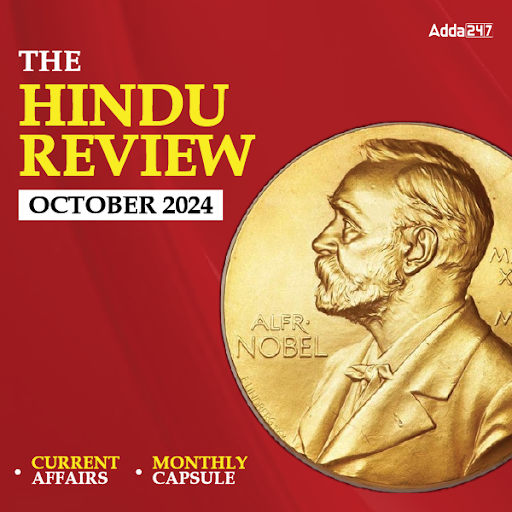Quantitative Aptitude Quiz For SBI PO/Clerk Prelims
Q1. A mixture contains milk and water in the ratio 5 : 1. On adding 5 liters of water, the ratio of milk and water becomes 5 : 2. The quantity of milk in the original mixture is?
Q2. A vessel contains 1 litre mixture of kerosine and disel and the other vessel contains 2 litre mixture of the same. The ratio of kerosine and disel in first and second vessels is 5 : 4 and 7 : 2 respectively. The mixture of second vessel is poured into first vessel. Find the ratio of kerosine to disel in the first vessel.
Q3. A chemist has 10 litre of a solution that is 10% sulphuric acid by volume. He wants to dilute the solution to 4% strength by adding water how many litre of water must be added?
Q4. Rishabh bought 25 kg of wheat at the rate of Rs. 6 per kg and 35 kg of wheat at the rate of Rs. 7 per kg. He mixed both type of wheat and sold the mixture at the rate of Rs. 6.75 per kg. What was his gain or loss in the transaction?
= 6.75 × 60 – (25 × 6 + 35 × 7)
= Rs. 10, gain
Q5. An alloy contains silver and lead in the ratio 5 : 8 and another alloy contains silver and lead in the ratio 5 : 3. If equal amount of both the alloys are melted together, then the ratio of silver to lead in the resulting alloy is
Directions (6-10): In each of the following questions two equations are given. You have to solve the equations and
Give answer –
Q6. I. 3x² + 16x + 21 = 0
II. 6y² + 17y + 12 = 0
⇒ 3x² + 9x + 7x + 21 = 0
⇒ (x + 3) (3x + 7) = 0
⇒ x = –3, –7/3
II. 6y² + 17y + 12 = 0
⇒ 6y² + 9y + 8y + 12 = 0
⇒ 3y (2y + 3) + 4 (2y + 3) = 0
⇒ y = – 3/2, –4/3
y > x
Q7. I. 16x² + 20x + 6 = 0
II. 10y² + 38y + 24 = 0
⇒ 8x² + 10x + 3 = 0
⇒ 8x² + 4x + 6x + 3 = 0
⇒ (2x + 1) (4x + 3) = 0
⇒ x = –1/2, –3/4
II. 10y² + 38y + 24 = 0
⇒ 5y² + 19y + 12 = 0
⇒ 5y² + 15y + 4y + 12 = 0
⇒ (y + 3) (5y + 4) = 0
y = –3, –4/5
x > y
Q8. I. 8x² + 6x = 5
II. 12y² – 22y + 8 = 0
⇒ 8x² + 10x – 4x – 5 = 0
⇒ (4x + 5) (2x – 1) = 0
⇒ x = ½, –5/4
II. 12y² – 22y + 8 = 0
⇒ 6y² – 11y + 4 = 0
⇒ 6y² – 3y – 8y + 4 = 0
⇒ (2y – 1) (3y – 4) = 0
⇒ y = 1/2, 4/3
y ≥ x
Q9. I. 17x² + 48x = 9
II. 13y² = 32y – 12
⇒ 17x² + 51x – 3x – 9 = 0
⇒ (x + 3) (17x – 3) = 0
⇒ x = 3/17, – 3
II. 13y² – 32y + 12 = 0
⇒ 13y² – 26y – 6y + 12 = 0
⇒ (y – 2) (13y – 6) = 0
⇒ y = 2, 6/13
y > x
Q10. I. 8x² + 26x + 15 = 0
II. 4y² + 24y + 35 = 0
⇒ 8x² + 20x + 6x + 15 = 0
⇒ 4x (2x + 5) + 3(2x + 5) = 0
⇒ (2x + 5) (4x + 3) = 0
⇒ x = – 5/2, –3/4
II. 4y² + 24y + 35 = 0
⇒ 4y² + 10y + 14y + 35 = 0
⇒ 2y (2y + 5) + 7 (2y + 5) = 0
⇒ (2y + 5) (2y + 7) = 0
⇒ y = –5/2, –7/2
x ≥ y
Directions (11 – 15): Read the following graph carefully and answer the questions given below
Percentage distribution of total number of students who completed their graduation from different Universities A, B, C, D, E and F.
Q11. The number of males in university D is equal to number of females of which university?
Q12. What is the respective ratio between number of males in university B and number of females in university F?
Q13. The number of males in university A is what percent of total number of students in university E?
Q14. What is the total number of females in all universities together?
Q15. The number of males in university C is approximately what percent more than the number of males in university F?






 The Hindu Review October 2022: Download ...
The Hindu Review October 2022: Download ...
 Central Bank SO Salary 2024, Pay Scale, ...
Central Bank SO Salary 2024, Pay Scale, ...
 RRB ALP Admit Card 2024 Out, Hall Ticket...
RRB ALP Admit Card 2024 Out, Hall Ticket...




